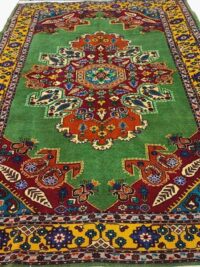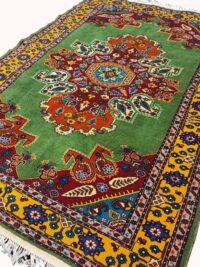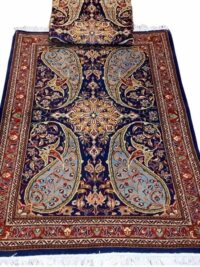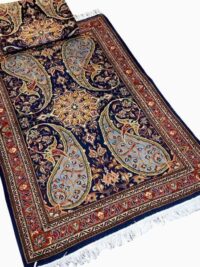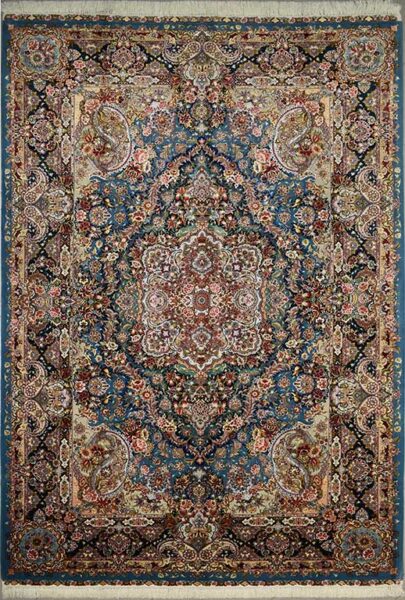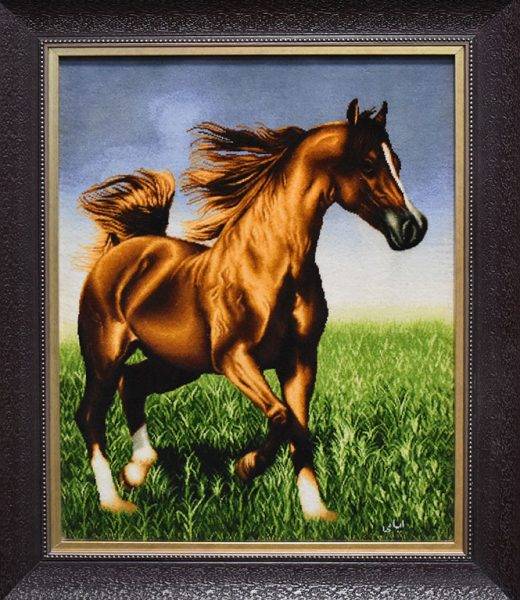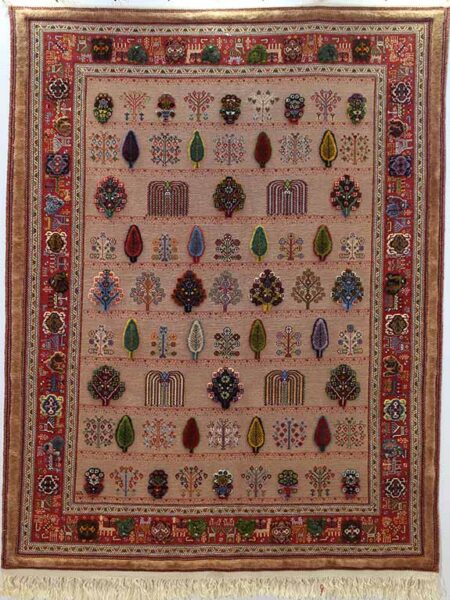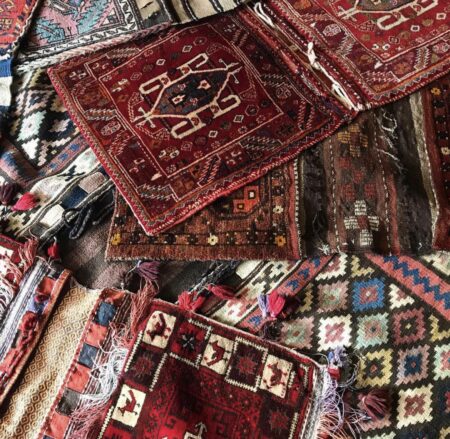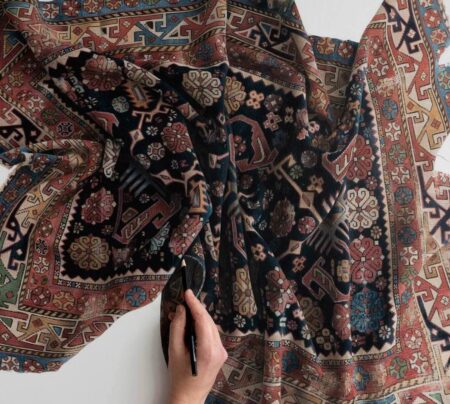
Showing all 3 results
Bote Jeghe Design
In the Persian language and literature, the word “bote” means a booteh (a bunch of leaves) and jeghe means a feather, which, according to many experts, is a symbol of freedom and self-esteem of Iranians. Bote-Jeghe or Paisley Pattern hand-woven carpet is one of the famous designs of Iranian carpets, whose shape resembles a bent cypress. This design is very similar to a teardrop, the tip of which is curved and repeats itself throughout the entire carpet. Sometimes it is the same size, sometimes it is bigger, sometimes it is smaller, and it is considered one of the original oriental designs. Also, in terms of appearance, it is similar to the beak of the Indian female parrot, the fruit of the pine tree, and almonds.
Some experts consider the origin of this design to be Elamite-Assyrian art and finally Achaemenid art. Designers of ancient arts believe that the bote-jeghe or curved cypress pattern was created from the combination of a flower bud and a cypress tree and is a symbol of freedom and eternal life in Zoroastrianism. According to a Zoroastrian legend, a cypress tree, which is a symbol of freedom, was brought from heaven for King “Ghoshtasb”, and “Ghoshtasb” planted that tree as a memorial to the Zoroastrian religion next to the fire temple in Kashmar in Khorasan province. Regarding the history of the origin of this design, it may be interesting for you to know that in 1949, along with the Pazyryk carpet, the oldest carpet discovered in the world, in the excavations of the Pazyryk valley, a leather thermos was also found, which was decorated with the pattern of bote-jeghe. According to the experiments, the age of this leather thermos should be about 2500 years. By putting these findings together, it seems that the Pazyryk carpet is also of Iranian origin.
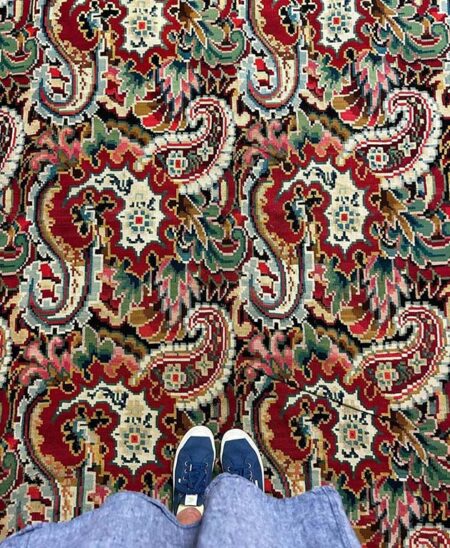
Bote jeghe or Paisley design
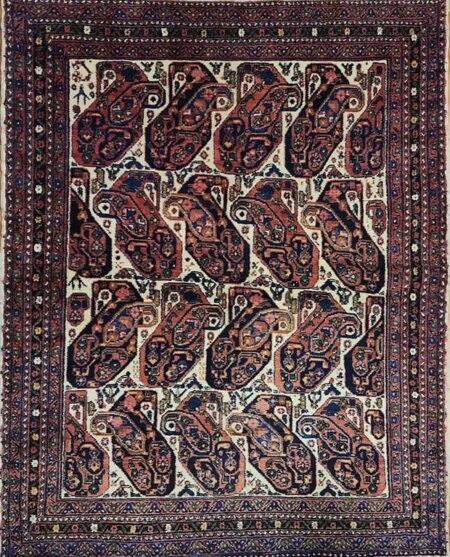
Kerman carpet with bote jeghe design

